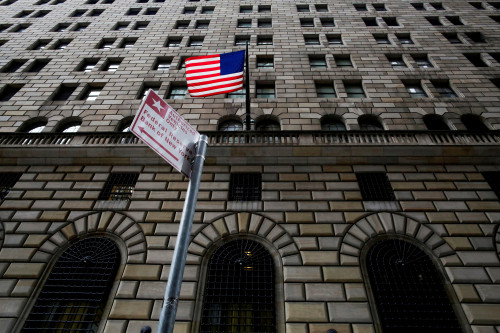By Howard Schneider
WASHINGTON (Reuters) -The data that caused President Donald Trump to fire the head of the Bureau of Labor Statistics because he did not like the July employment report, calling it “rigged,” is being taken as serious evidence by Federal Reserve officials of a slowing economy and as a justification for the interest rate cuts Trump wants.
“The latest employment report confirmed some of the signs of fragility and reduced dynamism in the labor market,” Fed Governor Michelle Bowman, a Trump appointee, said in a Saturday speech that elaborated on how the latest jobs numbers and revisions to prior months’ data validated her concerns about a weakening economy. “I see the risk that a delay in taking action could result in a deterioration in labor market conditions and a further slowing in economic growth.”
While signs of a weakening labor market could get Trump his wish for the Fed to cut rates, which he believes would result in lower interest costs on the country’s increasing debt load, it also flies in the face of his assertions that his tax cuts and immigration and trade agendas are driving growth higher.
Comments from policymakers who had recently been focused on rising inflation, for example, show that news of ebbing job growth in May, June and July has begun shifting their sense of risks facing the economy.
While only Bowman and another Trump appointee, Governor Christopher Waller, have so far advocated for immediate rate cuts, with both dissenting against last month’s decision to hold rates steady, investors now put a more than 85% probability on a cut at the Fed’s September 16-17 session.
New BLS data on Tuesday showed consumer prices rose 2.7% in July on a year-over-year basis, the same as in June, a number held down by lower prices for gasoline and food at home. But excluding volatile food and energy costs, underlying or “core” inflation rose to 3.1% from 2.9% the month before, driven up by increases in services including medical care and airline travel, and by goods including furniture and used vehicles that could be related to tariffs.
Traders retained bets on cuts at the Fed’s September and December meetings after the data was released.
For all its recent shortcomings in data production, BLS has dense internal checks to be sure the figures are not manipulated, while the Fed is attentive to shades of gray and almost always cautious when approaching policy shifts.
Trump late on Monday named E.J. Antoni, chief economist at the conservative Heritage Foundation, as the new commissioner, a decision that will be watched with the same intensity in economic and investment circles as his coming choice for a successor to Fed Chair Jerome Powell, given the implications for the integrity of data that can influence interest rates, stock prices and political fortunes.
Fed policymakers in recent comments have noted ways they can supplement and cross-check what comes from the BLS.
Policymakers “look at data produced by statistical government agencies. We also look at a lot of data that’s not produced by statistical government agencies. We try to validate what the different data sets are saying, make sure they are telling the same story,” St. Louis Fed President Alberto Musalem said last week.
“I’m confident we can continue to do our job well….We’re connected to the economy through direct interaction with companies and households all around the country. So in addition to data, we have a very strong impressionistic view of the economy,” he said.
CROSS CHECKS
Even if the BLS remains in flux, there is no shortage of data for the Fed to peruse for clues on the economy.
Private data sources have expanded dramatically in recent years, as have alternatives aiming to measure consumer foot traffic, prices, job openings and hiring in close to real time by drawing on things like online hiring sites, cellphone locations and online prices.
Groups like the Institute for Supply Management provide important insight on inflation, while surveys by the University of Michigan, the National Federation of Independent Business, the Conference Board and others offer insight on inflation expectations, hiring, and the general economic outlook.
Administrative records provide an important backstop because they represent tabulations of actual events. Unemployment benefits claims are reported weekly by each state and compiled into a single report by the Labor Department, while datasets like the BLS Quarterly Census of Employment and Wages submitted by businesses come with a lag but provide an eventual check on monthly job growth estimates.
The Fed also has its own data collection efforts, including surveys of business executives like chief financial officers, and extensive but less formal interviews underlying its Beige Book, an anecdote-based window on the economy prepared ahead of each rate-setting meeting. Quarterly data compilations provide a slower-moving view of the health of household balance sheets.
Minneapolis Fed President Neel Kashkari said in a CNBC interview last week that he felt any effort to tilt the results at an agency like BLS would fail.
“You cannot fake economic reality…Imagine that numbers are being faked for anybody’s political benefit. People are going to see what they feel. Companies are either going to be hiring or they’re not, and so Americans are going to see the economy. Convincing them that inflation is not real is not a very effective strategy. Convincing somebody that the jobs numbers are better than they really are, I don’t think it’s actually going to work.”
(Reporting by Howard Schneider; Editing by Dan Burns and Andrea Ricci)

